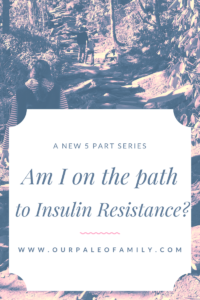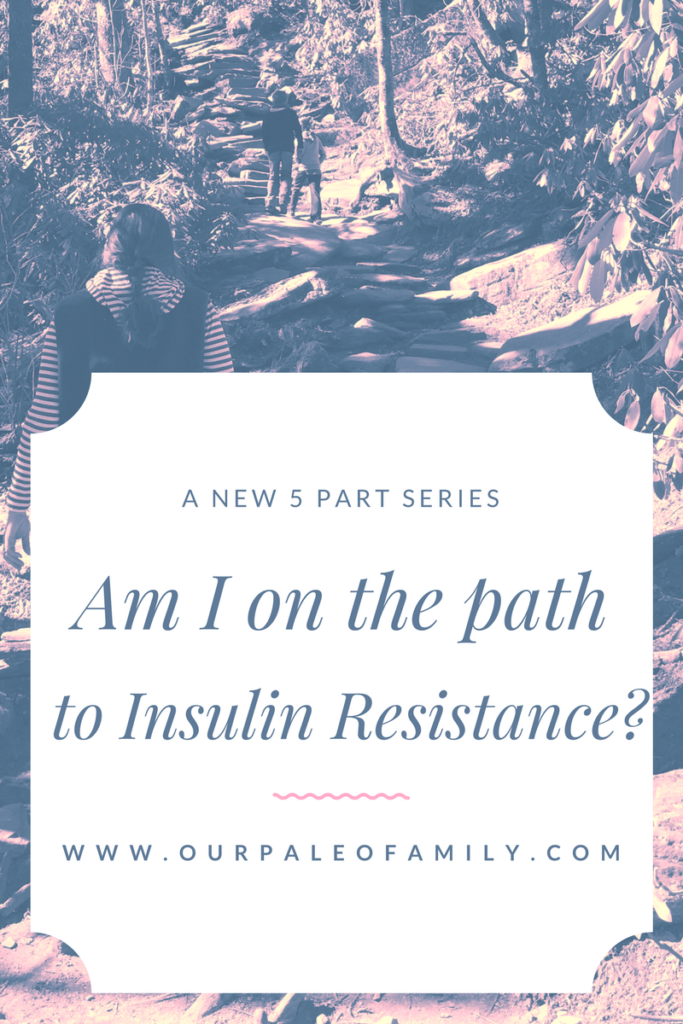January 23, 2017: I just had a check up with my functional medicine doctor. Some of my lab results were really encouraging and others were of concern. I started seeing this doctor to manage my Crohn’s disease naturally, but he is treating me as a whole. As it turns out, Crohn’s is really the least of my worries right now (a fact that is not lost on me – I’m very, very thankful). What is of concern is that I have dyslipidemia and am borderline insulin resistant.

These diagnoses are bad news. The dyslipidemia is not great, however, it is not a surprise to me. Before I had kids, I worked for LipoScience, the company that created the test for lipoprotein particle size and number. What their test tells you is how many and what size lipoprotein particles you have, rather than how much cholesterol is in the particles (the test is called the LipoProfile*). The lipoproteins are the vehicles for the cholesterol and information about those guys is really more important than details about the amount of cholesterol they contain. The ideal scenario is to have few, large, fluffy particles rather than many, small particles. I have many, small particles, which puts me at higher risk for cardiovascular disease. From my days working at LipoScience, when I had my LipoProfile done regularly, I know that this particular profile has been mine for a long time. I figured it was all genetic because at the time, I followed the widely-accepted nutritionist guidance to eat lots of whole grains, vegetables, fruits and a little low fat meat. Turns out there is a genetic component, but an individual’s lipoprotein profile can also be affected by diet, lifestyle and supplementation. I’m painting with very broad strokes here, but this gives you a general overview of lipoproteins vs. cholesterol. If this is something you’d like to know more about, let me know in the comments and I can do an entire article on the topic.
You might be thinking what I was thinking: if my lipoprotein profile was less than ideal when I was following the Standard American Diet, it should be great now that I’ve been paleo for a few years. Apparently not. But again, it’s been my understanding that genetics play a huge role here.
As much as I was not surprised by the dyslipidemia, I was totally taken aback by the insulin resistance score. A variety of blood tests are performed and their results together generate a numerical score. My score was one point away from what is generally accepted as conveying insulin resistance.
My results to all those tests have always been normal in the past, as recently as four months ago. How could there be such a dramatic change in such a short time? The answer: Thanksgiving, a Disney Vacation, Christmas, New Year’s Celebrations and Birthday parties. I stick to gluten free religiously. I know that gluten consumption would be extremely detrimental to my health. If you’ve read other posts here, you know that I “cheat” with dairy regularly and it doesn’t seem to affect me. At least I feel ok when I eat it. But aside from that, my diet is pretty pure. I eat a lot of vegetables, almost all my meat is pasture raised and I limit my sugar consumption.
But an 8 week stretch of lax eating meant a lot more sugar in my diet than normal. I’d say I probably ate 2-4 paleo cookies most days from Thanksgiving until the New Year. Then we had two family birthdays in early January, one of them mine. A piece of chocolate here, a cookie there, a slice of birthday cake here. In retrospect, it was a lot of indulging. My weight remained steady, which led to a false sense that these indulgences were ok. I maintained my exercise routine and didn’t necessarily overeat. I probably just under-ate the healthy stuff enough to compensate for the overconsumption of calories from the bad stuff. Let me reiterate, except for the time in the Happiest Place on Earth, all of my sweet indulgences were paleo approved, sweetened with dates, honey and/or maple syrup. Even still, here I am knocking on the door of insulin resistance.
What I have learned is that my body is “extremely carbohydrate sensitive.” I think I’ve known this for a long time, but now I have proof. These were my doctor’s actual words, so it’s a real, honest-to-goodness, biological scenario. I certainly know that when I eat sugar, I instantly crave more, especially if it’s refined sugar. My doctor has helped me to see the seriousness of my casual sugar consumption. What I perceived as just a few innocent, holiday appropriate treats were apparently a big deal to my body.
Insulin resistance is just a step away from Type 2 Diabetes. I know that this type of diabetes is completely preventable and reversible, so I know that my “almost” insulin resistance is preventable as well. But I have to take it seriously.
Part 2 of this article will get into the nitty gritty details of exactly what insulin resistance is and how it relates to diabetes.
Part 3 will cover how I am addressing my particular condition.
Part 4 will be a journal of sorts where I show you what I’m eating, how I’m exercising and other adjustments I’m making in order to kick this insulin resistance out the door.
Part 5 will come late spring after my follow-up appointment and I see how my labs have changed.
Stay tuned for Part 2…
*LipoScience was acquired by LabCorp a couple years ago. What this means for you is that the LipoProfile test is now much more widely available and covered by most major insurance.

Really enjoyed this article! Thanks!
You’re welcome!